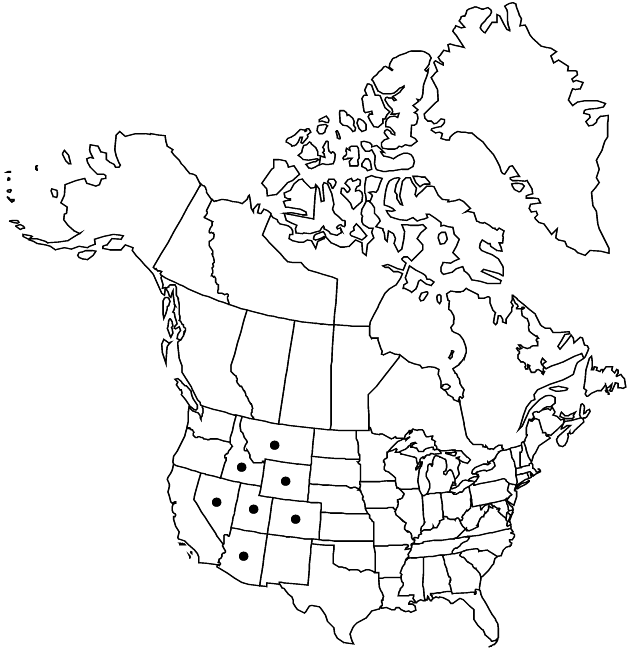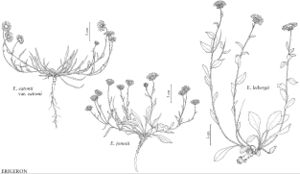Difference between revisions of "Erigeron eatonii var. eatonii"
IllustratedEndemic
Treatment appears in FNA Volume 20. Treatment on page 280.
imported>Volume Importer |
imported>Volume Importer |
||
| Line 48: | Line 48: | ||
|publication year= | |publication year= | ||
|special status=Illustrated;Endemic | |special status=Illustrated;Endemic | ||
| − | |source xml=https:// | + | |source xml=https://bitbucket.org/aafc-mbb/fna-data-curation/src/2e0870ddd59836b60bcf96646a41e87ea5a5943a/coarse_grained_fna_xml/V19-20-21/V20_571.xml |
|tribe=Asteraceae tribe Astereae | |tribe=Asteraceae tribe Astereae | ||
|genus=Erigeron | |genus=Erigeron | ||
Latest revision as of 20:04, 5 November 2020
Stems 9–20(–32) cm. Heads 1–2(–7), held well beyond basal leaves. Involucres 4.5–6 × 10–13(–16). Phyllaries sparsely villous (hairs mostly 0.3–0.8 mm), minutely glandular. Rays: laminae 5–7 mm. Disc corollas 3–4(–5) mm. Cypselae 1.7–2.4 mm; pappi of 16–20 bristles 3–3.5 mm. 2n = 18.
Phenology: Flowering May–Aug.
Habitat: Open, grassy sites, with sagebrush, pinyon-juniper, pine-oak, aspen-conifer
Elevation: 1600–3000(–3700) m
Distribution

Ariz., Colo., Idaho, Mont., Nev., Utah, Wyo.
Discussion
Selected References
None.
Lower Taxa
None.
